WANT EVEN MORE HEALTHY IDEAS FROM SHAPE YOUR FUTURE?
September is National Childhood Obesity Awareness Month, and our goal is two-fold: to raise awareness of the growing childhood obesity problem and to motivate communities, organizations, families and individuals to live healthier lives. From schools and child care providers to organizations and individuals, we can build a healthier future for our next generation of Oklahomans.
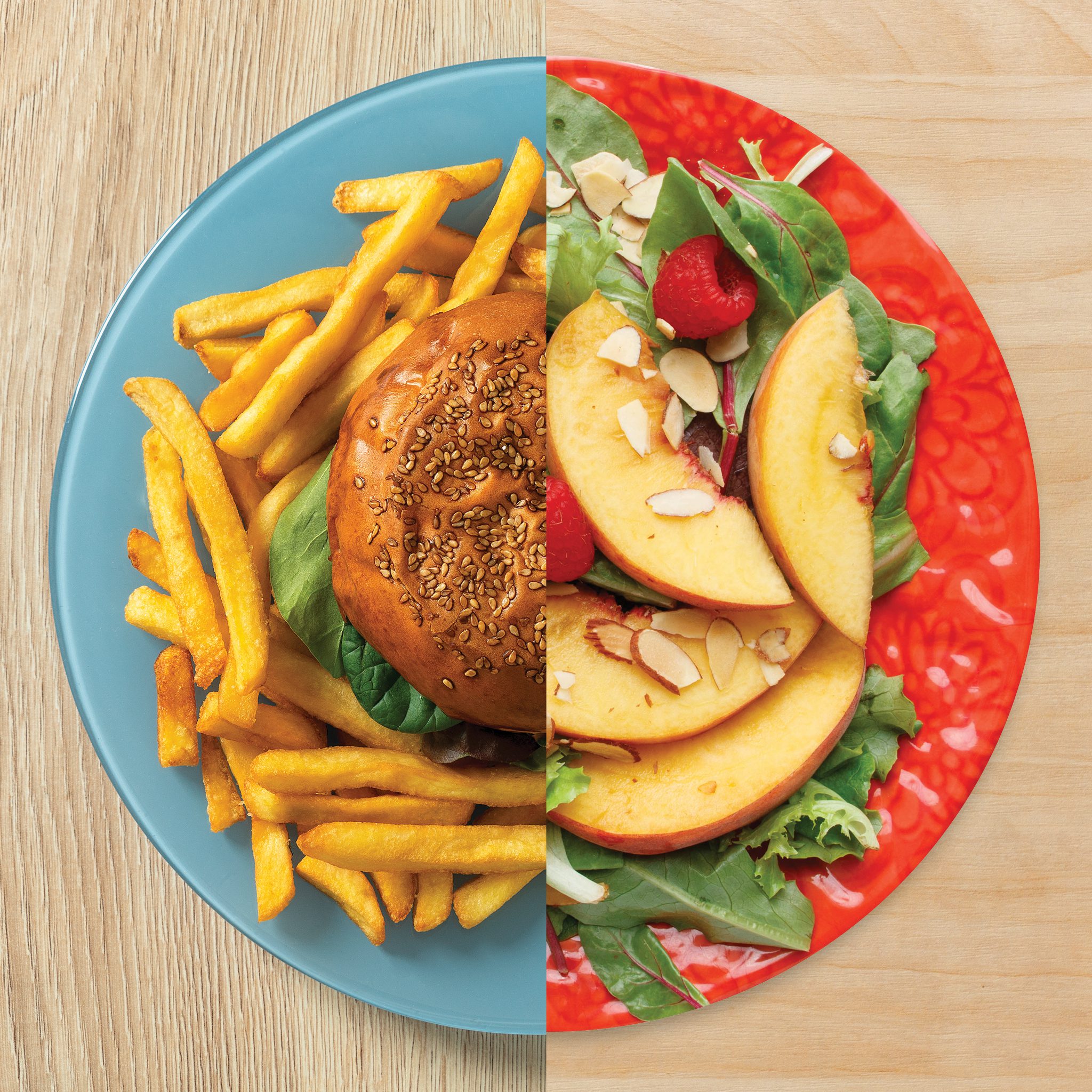
What’s Our Current Situation?
Over a third of Oklahoma kids ages 10-17 are overweight or obese, with 16.8% falling into the obese BMI (Body Mass Index) category. In addition, our state has the 7th highest high school obesity rate in the nation, at 17.6%. Why is this cause for concern? Because children with obesity are more likely to be obese as adults. This increases their risk for many chronic diseases, like cardiovascular disease, type 2 diabetes, stroke and 13 types of cancer. Not only are obesity and related health conditions deadly, they also cost our state more than $1 billion per year. Investing in a healthier future for all Oklahomans benefits everyone — even those who are healthy.
What’s fueling this surge in obesity?
One major contributor to the obesity problem is the overconsumption of sugar-sweetened beverages like soda, sports drinks, juice boxes, flavored milks and energy drinks.
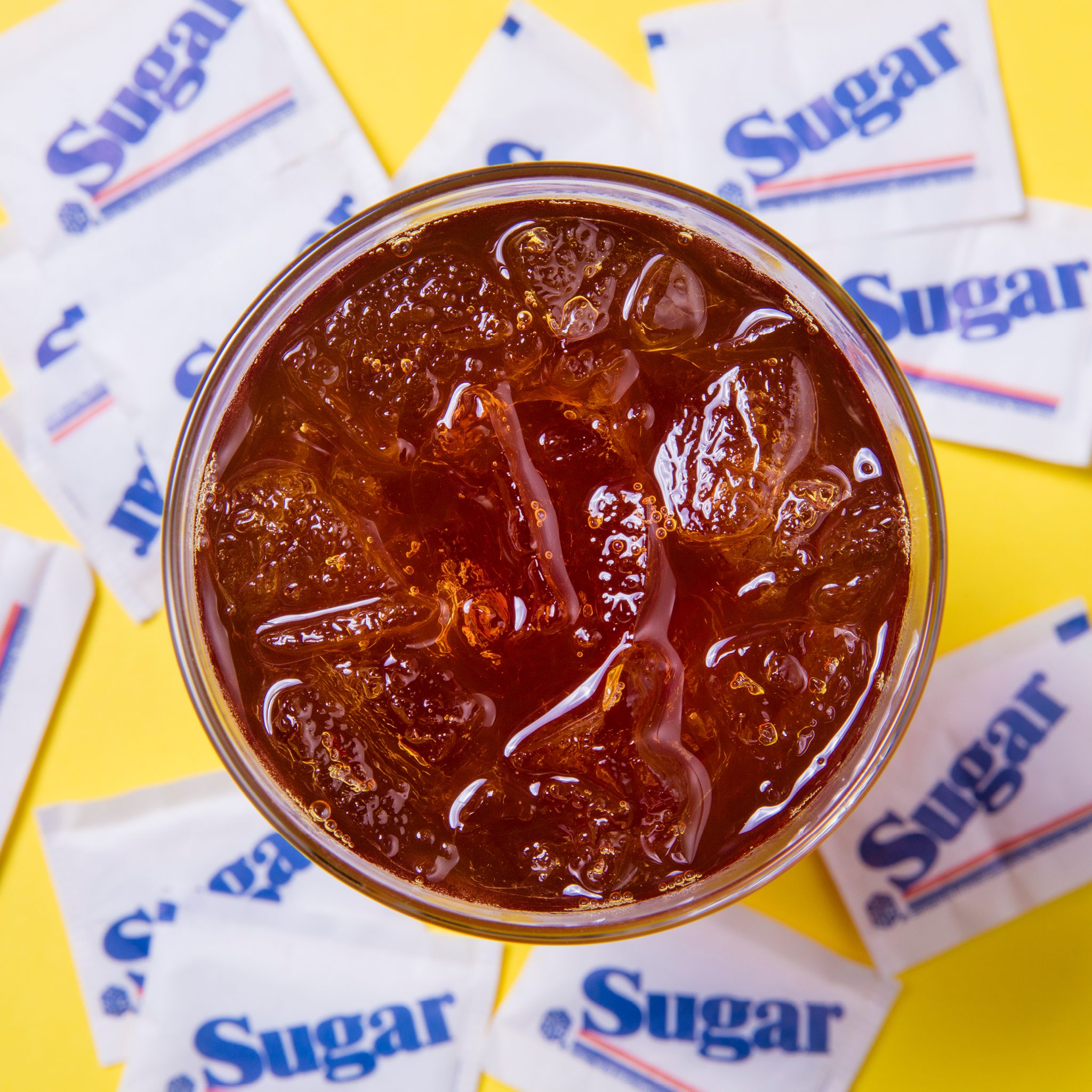
Beverages like these are loaded with sugar and empty calories. One 12-oz. soda contains up to 10 packets of sugar — more than three glazed donuts combined! A 12-oz. glass of sweet tea packs more sugar than 28 gummy bears. When children consume sugary drinks, eat unhealthy foods and don’t get enough physical activity, their risk of obesity skyrockets.
10 Ways to Keep Your Kids Healthy
1. Get involved at your child’s school.
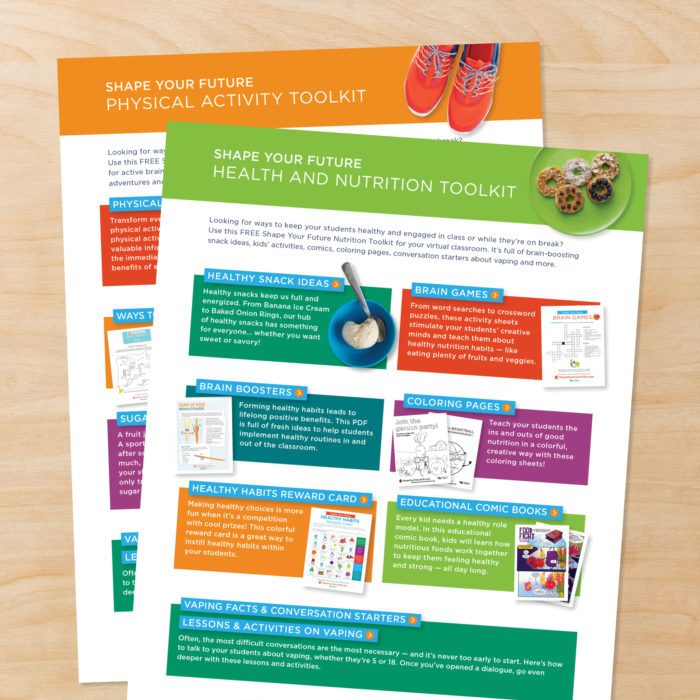
Contact your child’s teachers and administrators to find out which health programs and policies the school already has in place. If you identify any gaps, respectfully make suggestions. Your child’s teachers are facing unique stressors this year, so a little help goes a long way, like passing along our Health and Nutrition Toolkit and Physical Activity Toolkit.
2. Advocate for healthy policies.

Ask about your school’s nutrition and physical activity policies. Notice room for improvement? Contact an administrator or assemble a group of likeminded parents to help you move the needle in a positive direction. If your school is meeting virtually this year, point teachers and administrators to these free, at-home resources.
3. Create healthy routines at home.
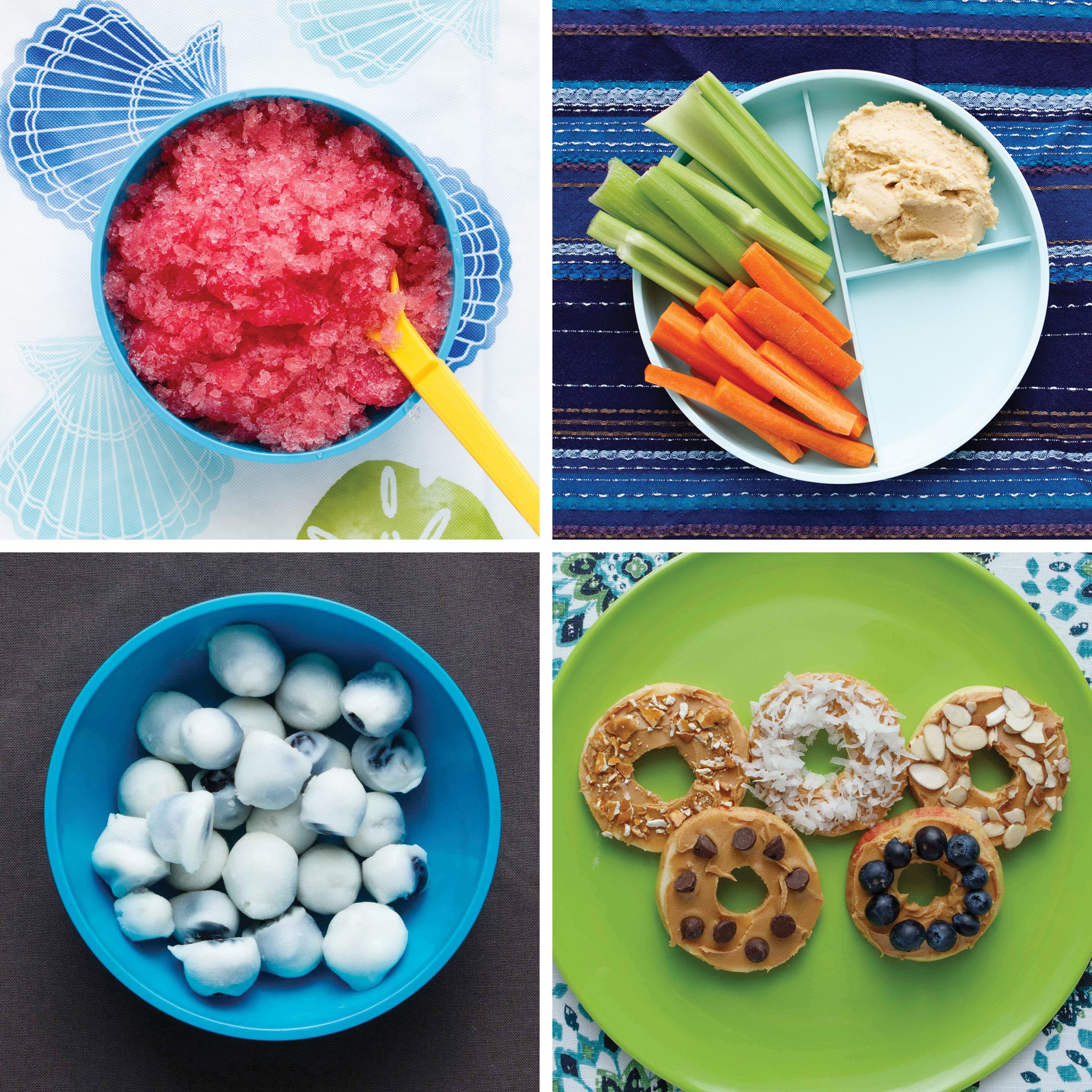
Fix healthy snacks and meals that fit your family’s budget and schedule. Also, limit your kids’ screen time. When you enforce these limits, you encourage your kids to find more active ways to play. Role modeling is a powerful tool — so set limits for yourself, too.
4. Talk to your kid’s doctor.

Before your child’s next appointment, come up with some questions to ask their doctor — like if your child is at a healthy weight for their age and height. If they aren’t, discuss safe ways to improve their health. Keep the conversation going at home with these tips.
5. Help your kid get 60 minutes of physical activity every day.
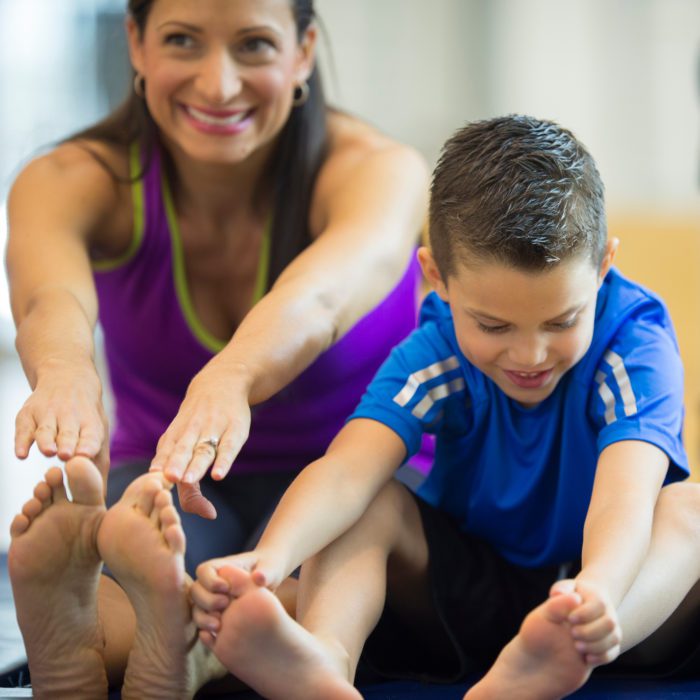
Choose fun activities the whole family can participate in. Try basketball one week, yoga the next week, then soccer, frisbee, tennis, etc. By changing it up from week to week, you’ll avoid burnout and discover new hobbies.
6. Choose water.

Thanks to no calories, no sugar and tons of health benefits, water is clearly the superior thirst quencher! Make it even more refreshing by infusing it with fruits and herbs. Find infused water recipes here.
7. Try our Healthy Habits Reward Card.
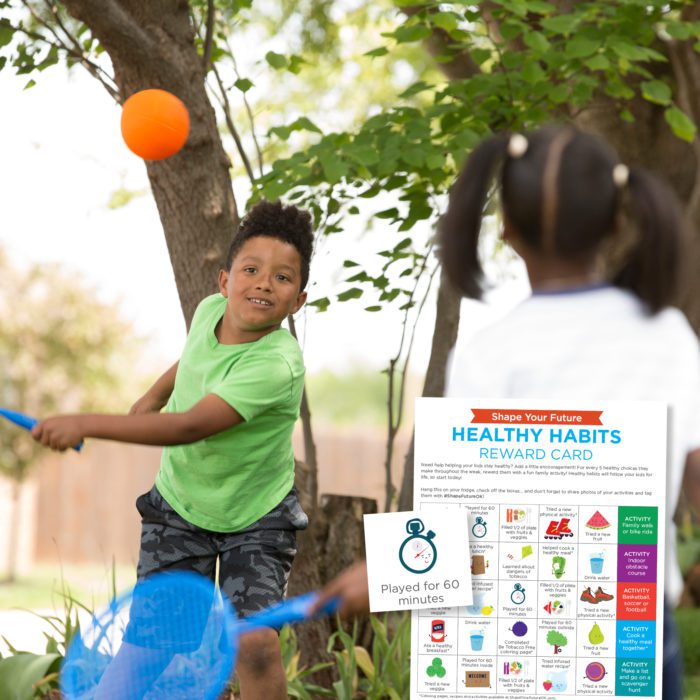
Make healthy behaviors even more fun with this engaging reward card. Print it out, hang it on your fridge and check off the boxes throughout the week.
8. Stay active during screen time.

Watching TV? During commercial breaks, challenge your kids to a push-up or jumping jack contest. During the show, mimic an activity that’s happening on screen, like a dance move or basketball shot. Or try this at-home TV Workout!
9. Pack a healthier lunch.
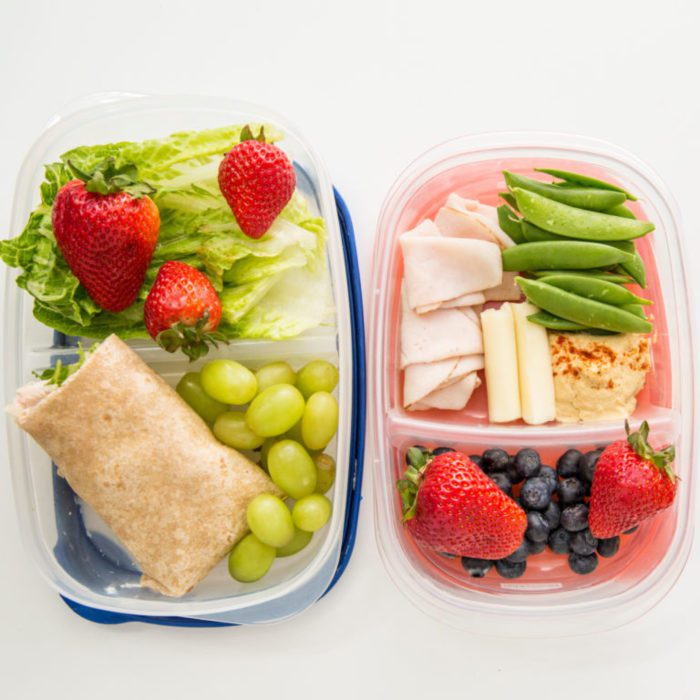
Avoid prepackaged foods, which are often high in sodium (like hot dogs, potato chips and fast food). Instead, try these 17 easy recipes and tips!
10. Find creative ways to play.

When you make physical activity fun, your kids will be more excited to participate. Invite them to invent their own games, which will also stimulate their minds. If you’re drawing a blank, check out this list of playful activities!
Together, we can reverse Oklahoma’s growing childhood obesity problem. For more healthy tips and tools, visit ShapeYourFutureOK.com.
Want to advocate for better health at your kid’s school and within your community? Get involved by contacting a TSET Healthy Living grantee here.




